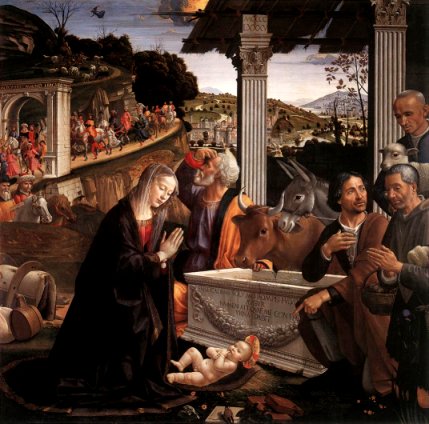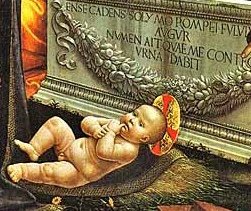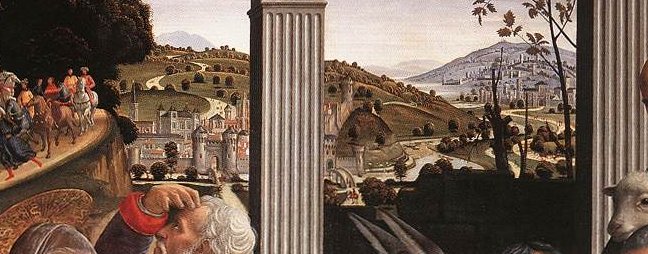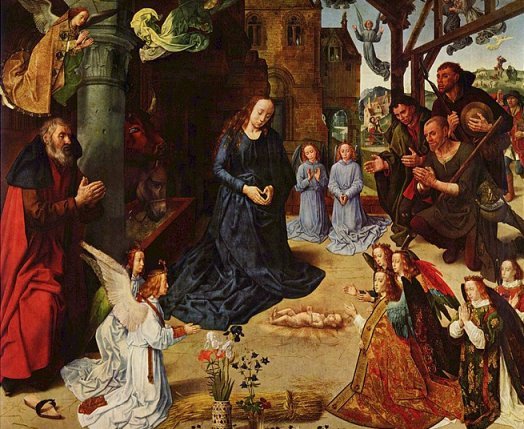The altarpiece - The Adoration of the Shepherds

The altarpiece, completed in 1485, is considered to be one of Ghirlandaio's finest paintings. It contains a number of significant details and references. Perhaps the most curious is the depiction of the manger as an inscribed sarcophagus.

The inscription says ‘Ense cadens soly mo Pompei Fulvi augur Numen aitquae me conteg urna dabit’
The Roman connection is reinforced by the classical columns and archway. In the background are two cities. The one on the right is suggestive of Jerusalem, with a dome. This is a familiar element in Nativity scenes. The closer city on the left has, it is said, elements of both Rome and Florence.

This is the central panel of the Portinari altarpiece by Hugo van der Goes, a Flemish artist. It was painted in Bruges, and brought to Florence by the wealthy Portinari family. It arrived in Florence in 1483 and was placed in the church of Sant' Egidio, the family church. Its influence on Florentine art was striking, and it became a model for Ghirlandaio's altarpiece. Most significant is the realistic detail and the use of symbols. The flowers at the front, for example, all have a theological significance: the red lilies represent the blood of Christ, the carnations represent the Holy Trinity, and the purple coumbines the grief of the Virgin Mary.
Perhaps the most obvious element borrowed by Ghirlandaio is the depction of the shepherds. In both paintings these are life-like characters, shown in a way never before seen in Italian art.

Back to page 1 Home page - explore the site